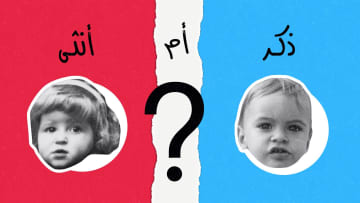دبي، الإمارات العربية المتحدة (CNN)-- كشفت دراسة نشرت بمجلة "JAMA Pediatrics"، عن أن اكتئاب الأم وقلقها خلال فترة الحمل وحتى العام الأول من حياة الطفل يرتبط بنتائج نمو سلبية خلال فترة المراهقة.
وتعاني نسبة تتراوح بين 15٪ و23٪ من النساء في جميع أنحاء العالم من القلق أثناء الحمل، بينما تتعامل 15٪ منهن مع القلق بعد الولادة. وتشير التقديرات إلى أن الاكتئاب أثناء الحمل يصيب 10٪ من النساء، فيما تواجه 15٪ منهن الاكتئاب بعد الولادة.
وارتبطت معاناة الأم من الاكتئاب والقلق، في فترة الحمل والولادة، مع عجز الطفل في اللغة، والنمو المعرفي والحركي خلال مرحلته المبكرة.
وكان هؤلاء الأطفال أكثر عرضة لإظهار سلوكيات تعكس مشاعر سلبية، كما يمرون في فترة صعبة خلال مرحلة المراهقة.
وقالت الدكتورة دينيس جاميسون ، وهي رئيسة قسم أمراض النساء والتوليد في جامعة إيموري، والتي لم تشارك في الدراسة: "في ظل الوباء، هذه النتائج مقلقة بشكل خاص".
وأضافت: "نظراً إلى أن عوامل خطر الإصابة بالاكتئاب تشمل ضغوطات الحياة ونقص الدعم الاجتماعي، قد تتعرض النساء خلال فترة الحمل وما بعد الولادة لذلك بشكل خاص، في الوقت الحالي".
ونوهت أن هذه المخاطر التي تمتد إلى مرحلة المراهقة في حياة الطفل هي بمثابة تذكير بالآثار غير المباشرة لفيروس كورونا، والتي قد تكون طويلة الأمد.
كيف يمكن أن تؤثر الصحة العقلية للأم على نمو الطفل
وقالت الدراسة إن القلق والاكتئاب أثناء الحمل قد يعرضان الجنين لتركيزات متزايدة من هرمون الإجهاد الكورتيزول، ما يؤدي إلى تغيرات في وظائف المخ، ويقلل من تدفق الدم، والأكسجين، والمواد المغذية.
ويمكن أن تكون الأم أيضاً أقل قدرة على الاستجابة بسرعة وحذر لإشارات طفلها، ما يقلل من فرص الترابط بين الطرفين.
وقالت الدكتورة أليسون ستويب، وهي أستاذة في صحة الأم والطفل بكلية "جيلينجز" العالمية للصحة العامة في جامعة كارولينا الشمالية: "خلال عامهم الأول، لا يستطيع الأطفال تهدئة أنفسهم عند الشعور بالضيق، فهم يعتمدون على مقدمي الرعاية".
وأضافت: "بدعم من مقدمي الرعاية، يتعلم الأطفال تدريجياً كيفية التعامل مع الخوف والإحباط".
وتنصح كبيرة مؤلفي الدراسة، ديلسي هاتشينسون، جميع الأمهات، اللواتي تشعرن بالقلق بشأن مزاجهن، بطلب المساعدة من طبيبهن أو من أخصائي نفسي، في وقت مبكر.
وغالباً ما يتم التغاضي عن صعوبات الحمل والولادة، على حد قول هاتشينسون، حيث تعتقد بعض النساء أن الشعور بالإحباط أو التعب أو القلق هو أمر طبيعي.
وترفض النساء أحياناً طلب المساعدة بسبب قلقهن من وصمة العار المتعلقة بالصحة العقلية.
وأوضحت هاتشينسون أهمية البقاء على اتصال مع العائلة والأصدقاء، مع القيام بالأنشطة التي تبعث مشاعر السعادة، مثل المشي، أو التحدث إلى صديق، أو الحصول على قسط من النوم.
وقالت هاتشينسون إنه إذا كانت الأمهات يشعرن بالقلق من معاناة أطفالهن من أي من عيوب النمو التي كشفت عنها الدراسة، فيجب عليهم التحدث مع طبيب الأطفال.
وأضافت عبر البريد الإلكتروني: "إذا تم التعرف على هذه الصعوبات وطلب المساعدة، فيمكن تقليل الخطر، ما قد يؤدي إلى تحسين صحة الأم وطفلها".







